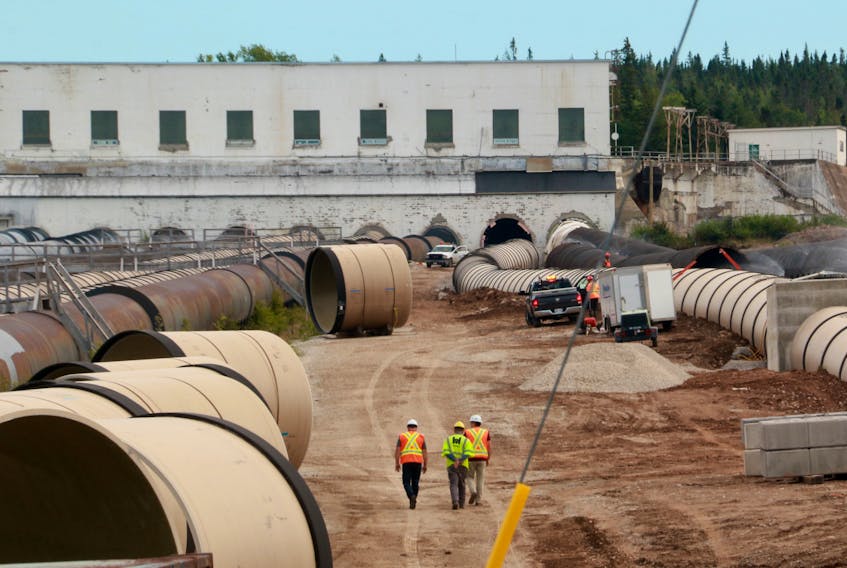While anyone passing by might be able to see work on the Deer Lake Power penstocks, it’s the work inside the powerhouse that excites Darren Pelley.
Pelley is general manager of Corner Brook Pulp and Paper, which owns the hydroelectricity plant that provides the city mill the bulk of its electrical needs.
The power station is fed water funneled from Grand Lake through the Humber Canal and Main Dam and then down through nine penstocks. Each penstock is connected to a generator that produces electricity for the operation some 55 kilometres down the Humber Valley.
The power plant, which was built in the 1920s in conjunction with the construction of the paper mill itself, once used all wooden-stave penstocks. In recent years, the company has been replacing those creosote-soaked timber tubes with reinforced fibreglass piping that will have more longevity and reduce leakage.
This year, the sixth of the nine penstocks is being rebuilt. The project encompasses replacing the No. 8 penstock, one of the two larger pipes.
But the penstock being replaced is not the only component of this year’s undertaking. Corner Brook Pulp and Paper is also rebuilding the massive generator connected to that particular penstock.
The seven smaller penstocks feed generators that produce 11 megawatts of power each. The two larger ones have double that capacity at 22 megawatts apiece.
However, the mill has never been able to fully utilize the output of the larger generators. The rebuilding of the No. 8 generator will speed it up so it can be fully harnessed.
“For many years, we talked about having the capacity, but being unable to use it. This is addressing that in a big way. It will be the first time we’ve been able to tap into the full capacity of Deer Lake Power.”
This year’s work represents $14 million of the $60-million cost to replace all nine penstocks in the coming years. It is the only job that will involve the rebuilding of a generator.
Pelley said the kind of output from the other larger generator, along with the smaller ones, is still needed for the mill’s operations and it doesn’t need to be rebuilt at this time. Doing so would require a major overhaul within the mill itself and would be much further down the road.
Taking the No. 8 generator offline, which it has been since penstock work began in August, requires the mill to purchase some power from the grid to keep operations running in Corner Brook. That cost is factored into the $14 –million price tag, said Pelley.
The refurbished generator is expected to be producing power once again by around the second week in November, not long after the accompanying penstock has been finished.
Before the mill can start accepting power from the new generator, there will need to be some work done on the transmission lines leading from Deer Lake to Corner Brook and where the power is received at the mill itself.
Other work
With an increased energy advantage, Pelley said there are other things the company can look at to become an even lower-cost producer.
The company is investing more money in mill infrastructure to protect its asset in Corner Brook too, including roofing and upgrading some obsolete processing equipment.
Pelley said they are looking around for more ways to lower costs and make the operation even more efficient, including the configuration of how fibre is handled.
“Managing the Deer Lake Power project takes on a lot of focus and energy,” said Pelley. “Once that’s done, we’ll be heavy into something else for sure.”









